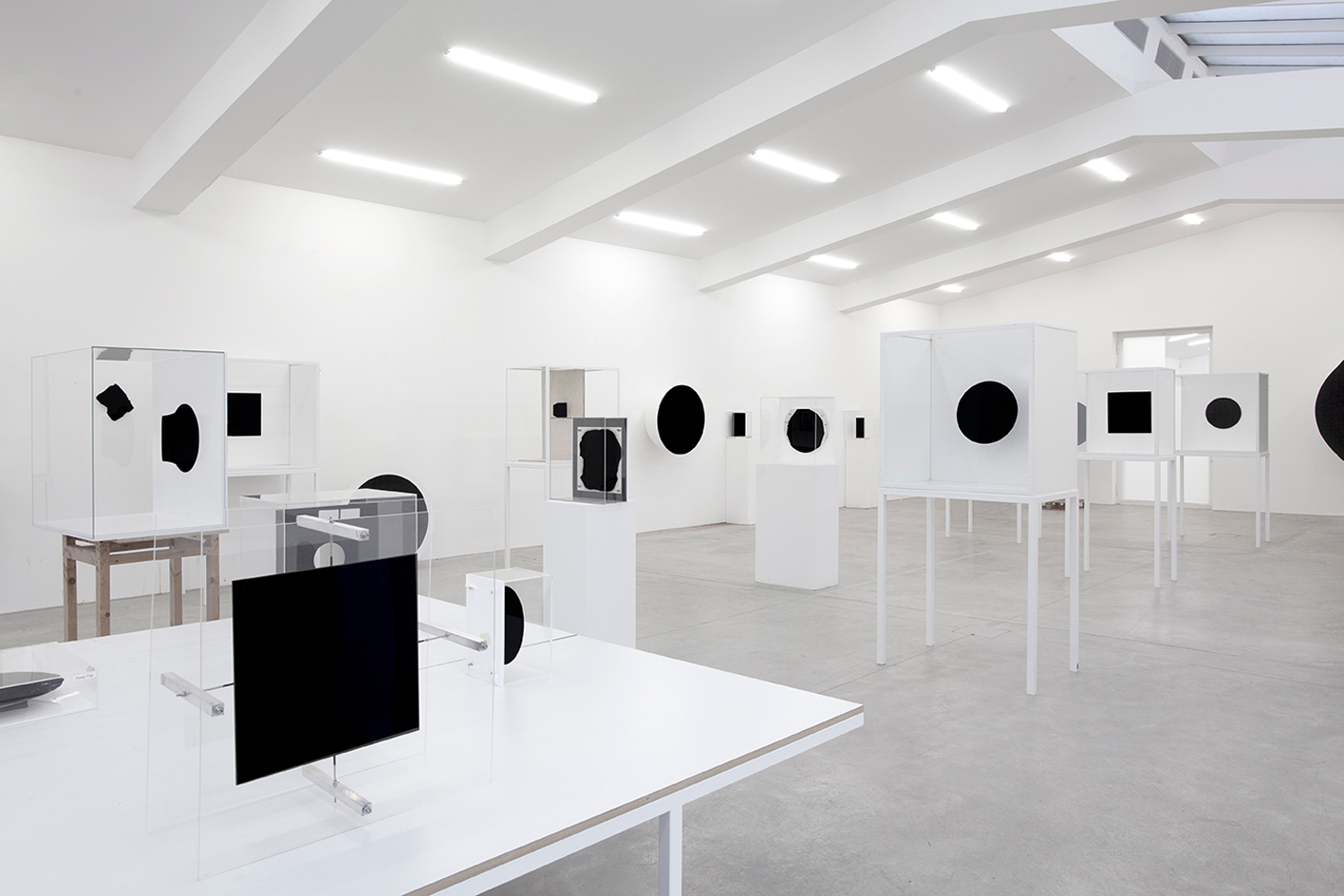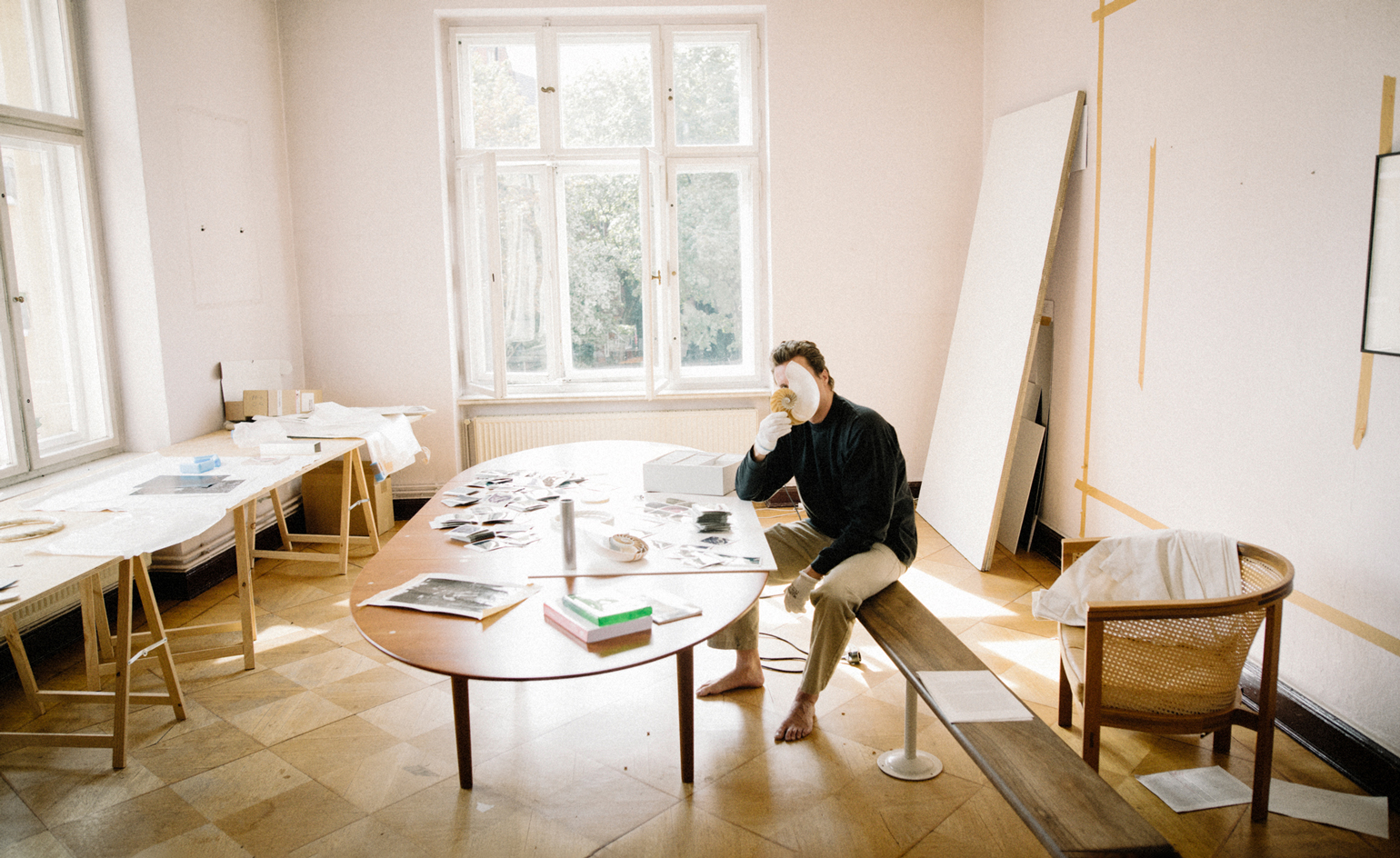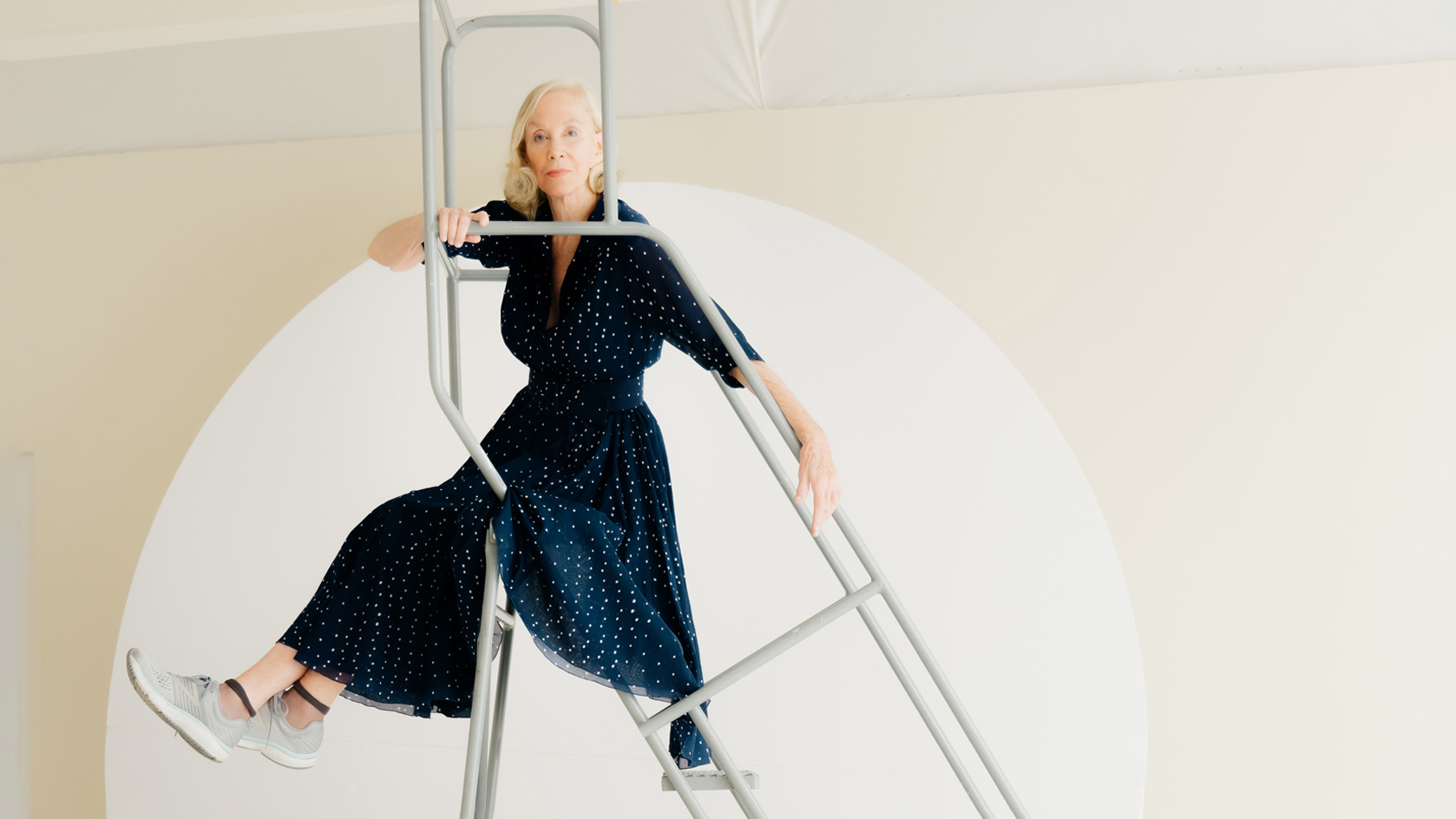Anish Kapoor in Venice: gore, glory and blackest black magic
We interview Anish Kapoor in his south London studio ahead of a major two-venue retrospective during the 59th Venice Biennale, where the artist will finally introduce the world to his Vantablack sculptures

Anish Kapoor’s art is rarely easy on the eye, but it is hard to stop looking at. Each of the many rooms in the artist’s vast south London studio contains very different Kapoors. Some are visceral, messy and erupting with disobedient desires. Some reflect, warp and bend what we know as physicality; others pretend it doesn’t exist.
This is a place of production, but also trial-and-error experimentation. For a Turner Prize-winning, Knighthood-bearing artist with frequent seven-figure auction results, he’s remarkably willing to reveal works in progress – just don’t take any pictures.
We’re touring Kapoor’s studio ahead of his mega-moment in Venice, where, during the 59th Venice Biennale, he will stage two simultaneous solo shows. The first takes place at the revered Gallerie dell'Accademia, where Kapoor, who represented Britain at the 1990 Venice Biennale, will become the first British artist to be honoured with a show. The second will unfold across the canal at the 18th-century Palazzo Manfrin, which, following many years of vacancy, has been acquired by the Anish Kapoor Foundation to become its headquarters once restorations are complete.

Anish Kapoor, Shooting Into the Corner, 2008-2009.
There is poetic symmetry in these shows. In the 18th century, Count Manfrin, a wealthy, Croatian-born tobacco merchant, transformed the first floor of Palazzo Manfrin into a public picture gallery. It became one of Venice’s main tourist attractions, visited by such cultural dignitaries as Lord Byron, George Ruskin and Edouard Manet. After Manfrin’s death, the collection was sold and many masterpieces – including La Tempesta by Giorgione – ended up, and remain, in the Accademia’s collection. In both these spaces, Kapoor, through iconic historical works and new, unseen paintings and sculptures, will consider what’s to come through what’s come before.
Despite his obvious market success, Kapoor shows little interest in ‘playing the game’. ‘The artist in a way is, at an elevated level, the cosmic fool, at a less elevated level, just a fool,’ he quips during our tour. ‘It is our job to allow the half-thought, the half-made. In today’s art world, the market has taken over everything. We have to remind ourselves that we are not makers of commodities; Louis Vuitton does it better.’


Anish Kapoor, Sacrifice, 2019, steel, resin. Above: The Unremembered, 2020 Steel, canvas, silicone, paint.
The first studio space on the tour is like an abattoir, chaotic red: ‘the colour of interiority’. The walls and floors are bloody. There are bits of bodies with the skin off, or which never had the skin on. Skin hangs and drapes on stair-like structures above pools of glistening, blood-like resin. The centrepiece is an utterly enormous steel sculpture. There’s no skirting around the obvious, it resembles a vulva – a recurring theme in Kapoor’s works. When I last visited his studio in September 2021, it was bare, now it bears a globule of bloody flesh. This piece is destined for the Palazzo Manfrin – shipping works to Venice is never an easy task, but at two and a half tonnes, this will be quite the operation.
Another room is erupting with what appears to be the inverted embodiment of Shakespeare's ‘mountain of mad flesh’, another enormous sculpture to be exhibited within the colonnade of Palazzo Manfrin.
Wallpaper* Newsletter
Receive our daily digest of inspiration, escapism and design stories from around the world direct to your inbox.
Kapoor’s paintings, revealed for the first time at Modern Art Oxford last year, harbour a similar depth of gore and violence. Deep purples, whites, and most reds on the spectrum capture a human body that is desecrated before it ever came to be, perhaps even more fleshy, bloody, primal, anatomically horrific than the Francis Bacons currently dominating London’s Royal Academy up the road.

Anish Kapoor, Diana Blackened Reddened, 2021, Oil on canvas, Triptych.
In another room, the mood changes again with Kapoor’s clean-cut, reflective works, the sort that often find their way into public spaces, and onto Instagram. Part science, part art, their concavity induces a kind of vertigo, enveloping the body, stretching it and turning it upside down, and confusing what we know to be physicality. These ‘non-objects’ penetrate the human desire to be seen from new perspectives, through the eyes of something, or someone else.
It’s difficult to avoid the feminine motifs that weave in and out of Kapoor’s work so freely. Sometimes they’re subtle, sometimes they’re blatant. Either way, Freud would have his work cut out in these studios. ‘Who is she? What is she? Is she my mother? I think that’s of course an ongoing, deeper, pursuit, again to which I don’t know the answer. Who cares!’ Kapoor exclaims, standing in front of a work that resembles a giant black vulva draped in a testicular formation.
At last, it’s time for the black magic show, also known as the ‘Vantablack’, ‘Anish Kapoor black’, or ‘blackest black’ works (or in popular culture wars, the subject of a longstanding, vitriolic stand-off with the artist Stuart Semple after Kapoor’s studio bought the exclusive licence to its application for artistic use). After many years of fame, infamy, anticipation and mystery, these works will appear in public for the first time in Venice. ‘There’s been this ridiculous controversy about me having control over the colour,’ Kapoor tells me. ‘It’s perfectly straightforward: it’s not a colour. It’s a technology. And it’s extremely complicated and sophisticated.’

Anish Kapoor Studio, 2020.
For those of us without a PhD in nanotechnology, Vantablack is a brand name for a type of ‘super black’ coating, developed for military stealth use by UK-based Surrey NanoSystems. When applied to a surface, the material becomes a forest of vertical particles that eat 99.8 per cent of visible light. When light strikes Vantablack, instead of bouncing off, it gets trapped, transformed into heat, and never leaves. As Kapoor claims, the material is ‘blacker than a black hole’.
The room is a grid of glass cases filled with black forms on white backgrounds (as Kapoor notes, an homage of sorts to Kazimir Malevich’s Black Square). Granted, these forms are very black, and, even on close frontal inspection, very flat. But look again, and move to the side of the glass boxes and something magical does indeed occur. What had two dimensions now has three as shapes protruding seemingly from nowhere.
Kapoor’s vacuous Vantablack works show no interest in their surroundings, reflect nothing and acknowledge no shadows. ‘If you put it on a fold, you can’t see the fold. So my proposition is that this material is therefore beyond being,’ he says.
It’s a bold claim, but this is a bold material that gets to the very heart of art as an illusion, the raison d'être of the Renaissance. Kapoor’s affinity with the period, and Venice by proxy, is clear; they share an obsession with colour, perspective, spiritualism and optical theatrics: ‘There are these weird wonderful, powerful parallels which I think are completely contemporary,’ he says. ‘Look at this bloody world that we’re living in.’ But there is one key difference: whereas the Renaissance sought to capture reality, Kapoor’s work attempts to swallow it whole.

Anish Kapoor, Void Pavilion V, 2018 Wood, concrete and pigment.
INFORMATION
Anish Kapoor’s work will be on view at the Gallerie dell’Accademia di Venezia and the Palazzo Manfrin from 20 April – 9 October 2022 in conjunction with the 59th Venice Biennale.
Harriet Lloyd-Smith was the Arts Editor of Wallpaper*, responsible for the art pages across digital and print, including profiles, exhibition reviews, and contemporary art collaborations. She started at Wallpaper* in 2017 and has written for leading contemporary art publications, auction houses and arts charities, and lectured on review writing and art journalism. When she’s not writing about art, she’s making her own.
-
 Put these emerging artists on your radar
Put these emerging artists on your radarThis crop of six new talents is poised to shake up the art world. Get to know them now
By Tianna Williams
-
 Dining at Pyrá feels like a Mediterranean kiss on both cheeks
Dining at Pyrá feels like a Mediterranean kiss on both cheeksDesigned by House of Dré, this Lonsdale Road addition dishes up an enticing fusion of Greek and Spanish cooking
By Sofia de la Cruz
-
 Creased, crumpled: S/S 2025 menswear is about clothes that have ‘lived a life’
Creased, crumpled: S/S 2025 menswear is about clothes that have ‘lived a life’The S/S 2025 menswear collections see designers embrace the creased and the crumpled, conjuring a mood of laidback languor that ran through the season – captured here by photographer Steve Harnacke and stylist Nicola Neri for Wallpaper*
By Jack Moss
-
 Cyprien Gaillard on chaos, reorder and excavating a Paris in flux
Cyprien Gaillard on chaos, reorder and excavating a Paris in fluxWe interviewed French artist Cyprien Gaillard ahead of his major two-part show, ‘Humpty \ Dumpty’ at Palais de Tokyo and Lafayette Anticipations (until 8 January 2023). Through abandoned clocks, love locks and asbestos, he dissects the human obsession with structural restoration
By Harriet Lloyd-Smith
-
 Year in review: top 10 art interviews of 2022, chosen by Wallpaper* arts editor Harriet Lloyd-Smith
Year in review: top 10 art interviews of 2022, chosen by Wallpaper* arts editor Harriet Lloyd-SmithTop 10 art interviews of 2022, as selected by Wallpaper* arts editor Harriet Lloyd-Smith, summing up another dramatic year in the art world
By Harriet Lloyd-Smith
-
 Yayoi Kusama on love, hope and the power of art
Yayoi Kusama on love, hope and the power of artThere’s still time to see Yayoi Kusama’s major retrospective at M+, Hong Kong (until 14 May). In our interview, the legendary Japanese artist vows to continue to ‘create art to leave the message of “love forever”’
By Megan C Hills
-
 Antony Gormley interview: ‘We’re at more than a tipping point. We’re in a moment of utter crisis’
Antony Gormley interview: ‘We’re at more than a tipping point. We’re in a moment of utter crisis’We visit the London studio of British sculptor Antony Gormley ahead of his major new show ‘Body Field’ at Xavier Hufkens Brussels
By Harriet Lloyd-Smith
-
 Photographer Maisie Cousins on nostalgia, impulsive making and ‘collecting useless things’
Photographer Maisie Cousins on nostalgia, impulsive making and ‘collecting useless things’Explore the vision of British artist Maisie Cousins in ‘Through the lens’, our monthly series spotlighting photographers who are Wallpaper* contributors
By Sophie Gladstone
-
 Rashid Johnson in Menorca: a journey through migration, longing and togetherness
Rashid Johnson in Menorca: a journey through migration, longing and togethernessWe visited Rashid Johnson’s Brooklyn studio ahead of the artist’s show at Hauser & Wirth Menorca, which contemplates drift – physical and emotional
By Osman Can Yerebakan
-
 Step inside the kaleidoscopic universe of Pipilotti Rist
Step inside the kaleidoscopic universe of Pipilotti RistSwiss artist Pipilotti Rist, who headlines Wallpaper’s November 2022 issue, has transformed the way we see, with a poetic yet playful practice spanning three decades. Here, and in a special portfolio, she reveals how she has liberated video art from its conventions, imbued the digital realm with emotion, animated public spaces, and harnessed the healing powers of colour
By Jessica Klingelfuss
-
 Gathering: the new Soho gallery blending art and social activism
Gathering: the new Soho gallery blending art and social activismGathering, the newest gallery resident in London’s Soho, will focus on contemporary art exploring systemic social issues. Ahead of Tai Shani’s inaugural show, we speak to founders Alex Flick and Trinidad Fombella about their vision for the gallery
By Harriet Lloyd-Smith